An educator and naturalist, Jim Gain is also a superb photographer. We’re proud to publish his series, “Learn 100 Common Valley Birds.” Here is post #17. Be sure to visit Reflections of the Natural World for more of Jim’s fine work. ed.
Bullock’s Oriole – Species #24
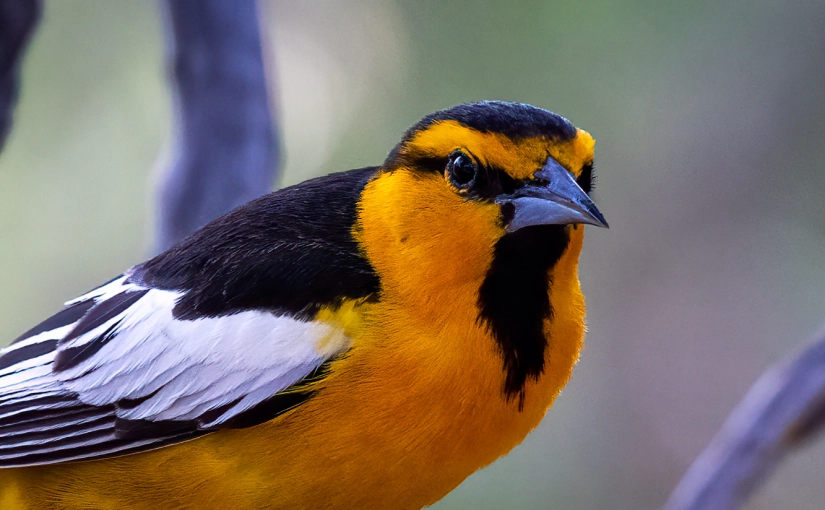
The Bullock’s Oriole (Icterus bullockii) is a strikingly colored songbird found throughout the Central Valley of California during its breeding season. Adult males have a bright orange head, black eye line, and a black back with white wing patches. Females are a subdued yellowish-brown with a grayish head and have streaked underparts.
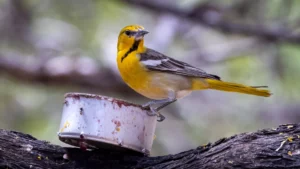
These orioles are generally found in riparian woodlands, where they build their distinctive hanging nests. They are often observed flitting about in the trees and shrubs, feeding on insects, nectar, and fruit. In the fall, Bullock’s Orioles migrate to Mexico and Central America, where they spend the winter.
Despite their bright appearance, these orioles can be challenging to spot in the dense foliage of their preferred habitats. However, their beautiful and distinctive song, a series of flute-like whistles, can often be heard echoing through the trees in the early morning hours. With their vibrant colors and delightful songs, Bullock’s Orioles are a welcome sight and sound in the Central Valley’s riparian woodlands.
Black-headed Grosbeak – Species #25
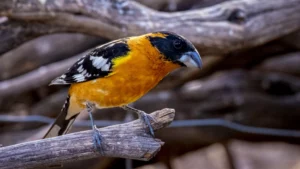
The Black-headed Grosbeak (Pheucticus melanocephalus) is a brightly colored bird species that can be found in the Central Valley of California during the breeding season, typically from April to August. Males are easily recognizable by their striking black head and vibrant orange breast, while females have a more muted appearance with brownish-gray plumage.
These birds prefer to nest in open woodland areas with scattered trees and shrubs, often near streams or other sources of water. They build cup-shaped nests made of twigs, bark, and grass, and lay 3-4 pale blue or greenish-blue eggs. The female typically incubates the eggs for about 2 weeks, and both parents take turns feeding the chicks once they hatch.
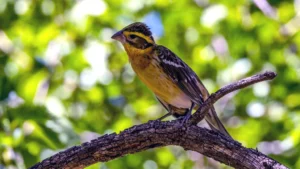
During the breeding season, Black-headed Grosbeaks primarily feed on insects and other invertebrates, but also consume seeds and fruits. They are known for their powerful beaks, which they use to crack open seeds and nuts. As fall approaches, these birds migrate south to wintering grounds in Mexico and Central America, making them a common sight for birdwatchers in the Central Valley during the summer months.
Western Tanager – Species #26
The Western Tanager (Piranga ludoviciana) is a stunning bird species that can be found in the Central Valley of California during spring and fall migration; it usually breeds in higher elevations. The male has a bright yellow head, contrasting with its black wings, back, and tail. Its underparts are bright red, making it one of the most colorful birds in the area. The female is less colorful, with a yellow-green head, olive back, and grayish underparts.
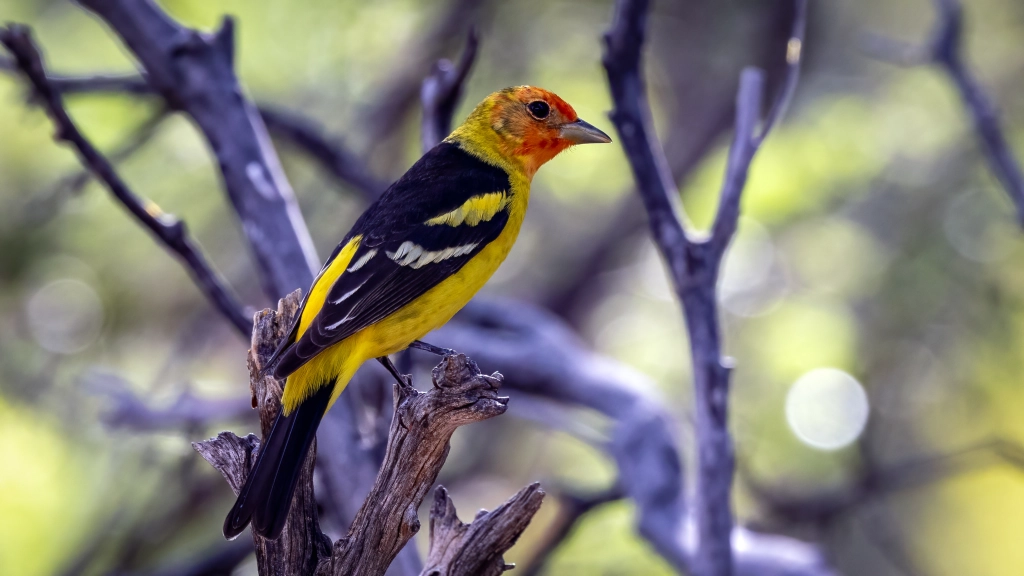
These birds can be found in coniferous forests and oak woodlands during the summer, where they build their nests in the high branches of trees. They feed on insects, fruit, and seeds; during migration, they can be seen in parks and gardens, where they are attracted to nectar feeders. They are known for their distinctive call, which is a series of short, sharp “chip” notes.
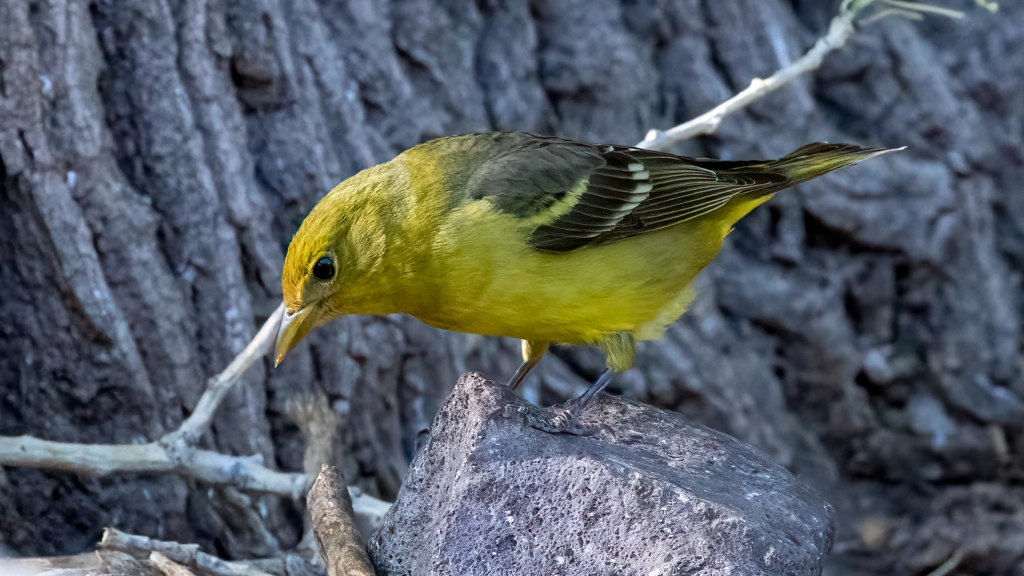
The Western Tanager is a migratory bird, spending winters in Mexico and Central America. Conservation efforts have been put in place to protect this beautiful bird species, as its populations have been declining due to habitat loss and climate change. It is a wonderful sight to see a male Western Tanager during the breeding season, and efforts to protect them should be continued to ensure that future generations can enjoy their beauty.


… [Trackback]
[…] Informations on that Topic: thevalleycitizen.com/learn-100-common-valley-birds-17-colorful-spring-migrants/ […]